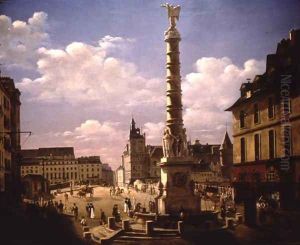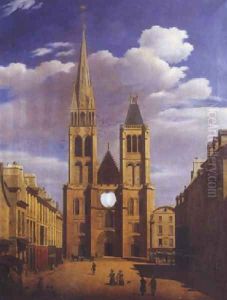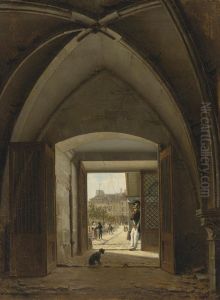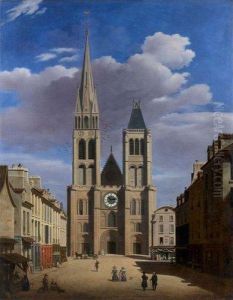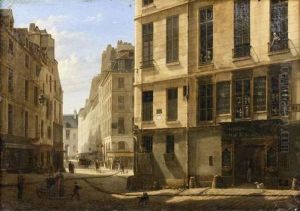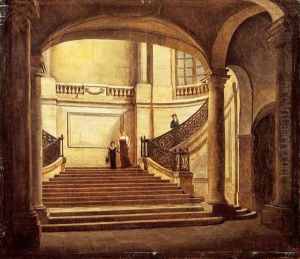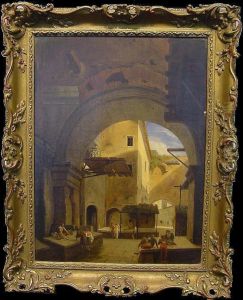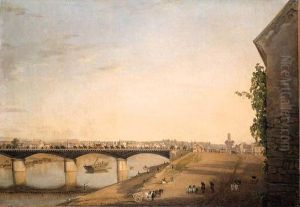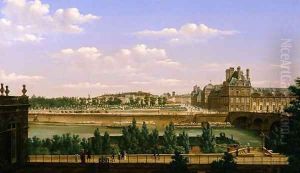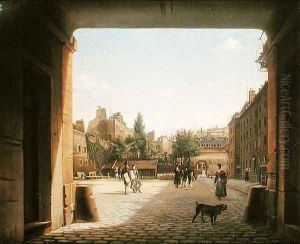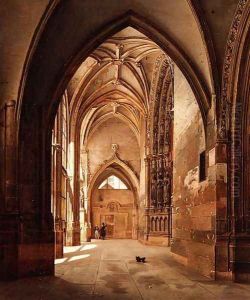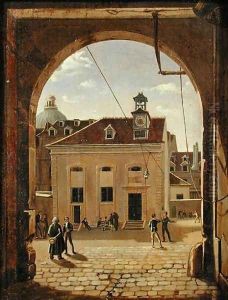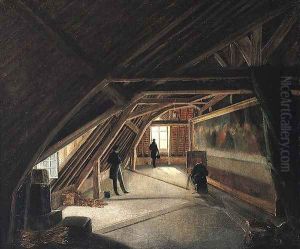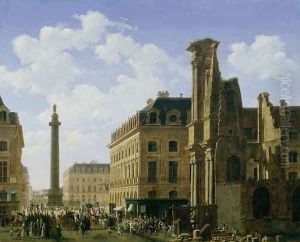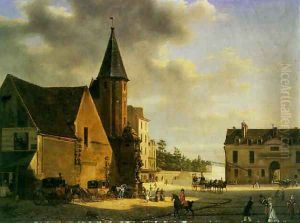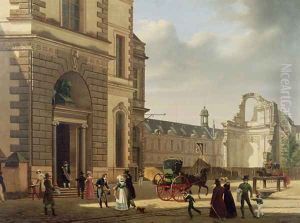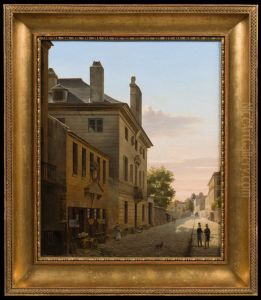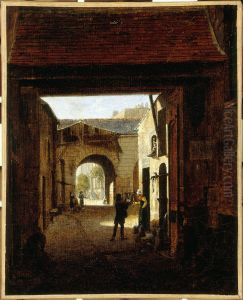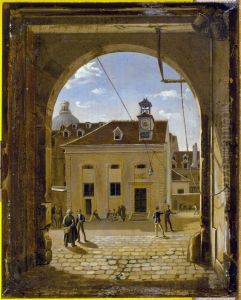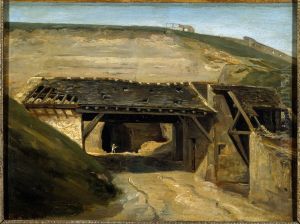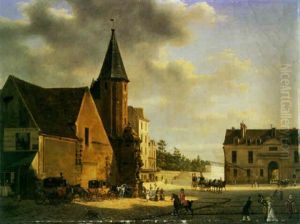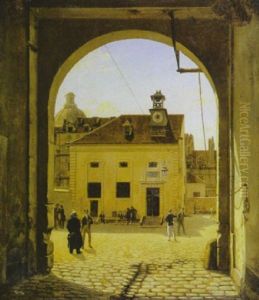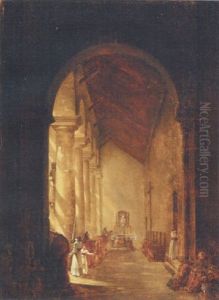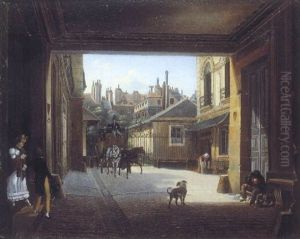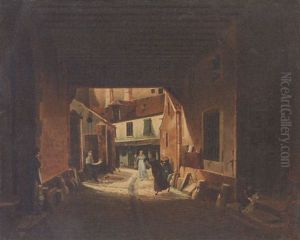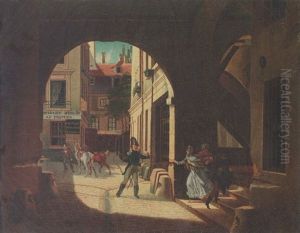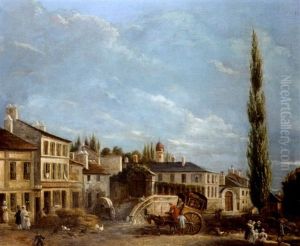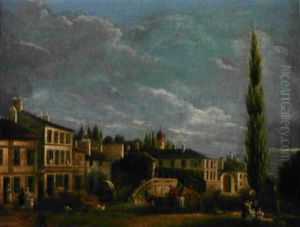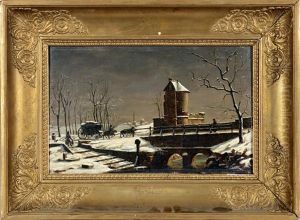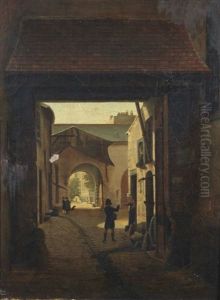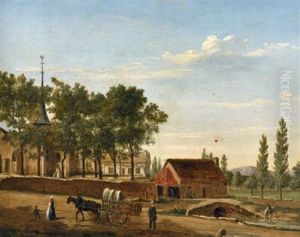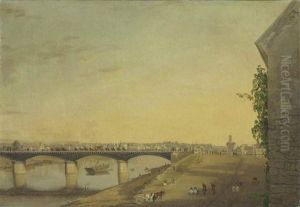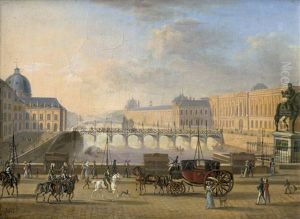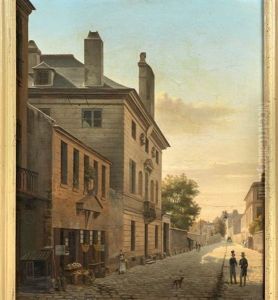Etienne Bouhot Paintings
Étienne Bouhot was a French artist known for his detailed cityscapes and architectural paintings, born in 1780 in Bard-lès-Époisses, France. Bouhot's work is characterized by its meticulous attention to detail and its focus on the depiction of urban and rural French landscapes during the early 19th century. He had a particular interest in capturing the essence of Parisian life and architecture, as well as the buildings and streets of smaller French towns.
Bouhot's early life and training in art remain somewhat obscure, but it is known that he developed a keen interest in drawing and painting from a young age. His work began to gain recognition in the early 1800s, and he exhibited at the Paris Salon on several occasions. Despite the quality of his work, Bouhot never achieved the same level of fame as some of his contemporaries. This was partly due to the changing tastes in art during his lifetime, as the Romantic movement began to overshadow the precise and detailed style that characterized his work.
Throughout his career, Bouhot was dedicated to the realism and accuracy in his depictions of architectural subjects. He was meticulous in his observation of the effects of light and shadow on buildings, streets, and the atmosphere, which added a lively and dynamic quality to his scenes. His paintings often included figures going about their daily lives, which helped to animate his cityscapes and lend them a sense of immediacy and realism.
Despite his modest success during his lifetime, Bouhot's contributions to French art have been more greatly appreciated in the years following his death in 1862. Today, his works are considered important for their historical value as well as their artistic merit. They provide a window into the urban and rural landscapes of France in the early 19th century, offering insights into the architectural and social milieu of the period. Bouhot's paintings are held in several museums and private collections, where they continue to be studied and admired for their detail, technique, and historical significance.
